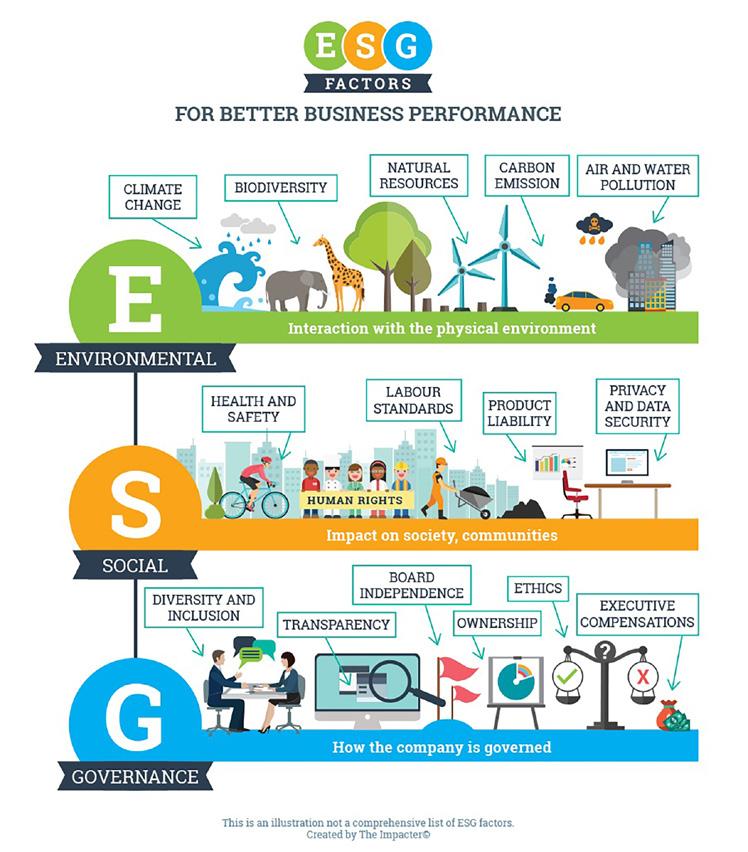
9 minute read
Preserving Painted Treasures
from March
not held up well over time, the CPWP believes that better treatment procedures need to be written. Consequently, the Center has gathered practitioners who work with paintdecorated plaster and homeowners who have walls needing attention, to share case studies and develop a set of best practices for the conservation and preservation of these painted icons of American decorative art.
Preserving Painted Treasures By Linda Carter Lefko
Advertisement
Stenciled and freehand painted walls—found under plaster, wallboard, and even paneling during renovations—can be important pieces of folk art. If you live in an antique home, the work of some great American folk artists may have long been hidden in plain sight, painted on your walls. More of it is being discovered in Maine every month as homeowners remove paneling and scrape off wallpaper.
Painted walls were perhaps slow to be appreciated for what they are, simply because they are not readily portable, nor are they easily displayed. As a consequence, they were not quickly recognized as important resources in the history of decorative arts in America. In fact, it was only about 60 years ago that scholars within the academic, antiques, and antiquarian communities started to fully recognize the artistic merit of such walls and begin documenting, recording, and writing about them.
Now it is acknowledged that many 19th century American paint-decorated plaster walls are folk-art treasures, but preserving them properly is often a challenge. Unfortunately for the discoverers and owners of these folk-art murals, there has never been a universal “how-to” guide for preserving and restoring paint-decorated plaster.
The Center for Painted Wall Preservation (CPWP) hopes to change that. The organization was founded in 2015 to save these cultural treasures from being destroyed or lost to the dumpster, destructive fresh coats of paint, or misguided attempts at conservation or preservation.
After documenting many early conservation treatments that have
PRESERVING WALLS Each room of painted plaster presents different preservation issues because every mural is different, and each building creates its own unique environment. For example, one room might have had inconsiderate wallpaper removal, while another could have sustained water damage because the mural was painted with water-soluble distemper. Still another might have been damaged by something as simple as the build-up of 200 years of soot and smoke from woodburning heat.
That said, the differences in materials—the plaster and paint—in homes are not as vast as you might expect. Most of the walls from the period 1800 to 1860 are lime-based plaster decorated with glue-based distemper paint. Currently the best way to deal with painted plaster is the “less is more” approach. The walls in a best state of preservation are often ones that have been left alone, even neglected. Ironically, poverty is often the best method of preservation.
Light is a problem most people fear. Some people have reported that their families have kept the shades drawn and lights out for 140 years, only lighting the room when showing off the walls to visitors. Our research has shown such fears are unfounded.
We have discovered that distemper paint is generally light-resistant and does not seem to fade when exposed to daylight or artificial lighting.
Cleaning is a bigger problem. Period painted walls should not be washed with soap and water. Any application of water will dissolve distemper paint, taking away the art with the dirt. That’s not to say painted walls cannot be cleaned, but it requires a different, time-consuming process—essentially erasing the grime inch by inch.
The best rule to follow is to practice reversible conservation with minimal treatment to the existing paint surfaces. This approach allows the original intention of the artist to remain without being reinterpreted. A good motto for wall owners is to “love it the way it is.”
When structural or other concerns prevent leaving the walls untouched, homeowners should take two key steps. First, document the walls with photographs and descriptions of their


Although painted plaster walls are widely revered in Europe, we in the United States are only now learning to appreciate their beauty and significance.
present condition. Then, before making any changes, register this documentation with the CPWP.
Next, seek expert advice from someone who is trained in painted wall preservation, someone who can advise and guide you through the best options for making careful changes. You want someone who has been certified by the American Institute for Conservation.
In general, once homeowners become aware of the historical value of painted walls, they are more appreciative and thoughtful about preserving them. People are usually interested in discovering more information about their walls. They want to know who painted them, when they were painted, and what the images represent. They ask us whether we have seen walls similar to theirs, and, of course, what they are worth. They want to know whether their walls can be restored and who is able to help them. Our April symposium is the first step to finding answers.
SYMPOSIUM Starting April 3, the CPWP will host a t h r e e - d a y s y m p o s i u m t i t l e d “Preserving Our Painted Past” at the Doubletree by Hilton in South Portland, Maine. Some twenty experts will discuss artists and their work, the materials and colors they used, and preservation, conservation, restoration, and new technologies such as using thermal imaging to peer through wallpaper.
Registration will include an April 2 visit to the Howe House to see original signed Rufus Porter murals in Bridgton, Maine, and a talk and tour (followed by a reception) of the exhibition Rufus Porter’s Curious World: Art and Invention in America 1815-1860 at Bowdoin College Museum of Art in Brunswick, Maine. On Friday morning, participants will tour two Portland locations with original murals. In addition, painted walls will be displayed for study at the symposium.
The goal is to begin dialogue among experts, museum professionals, and homeowners to address the complexity of and difficulties in conservation. You can register online at pwpcenter.org/symposium.
We hope that spreading awareness will lead to thoughtful preservation of these pieces of rare and unusually vulnerable artwork.
The Center for Painted Wall Preservation PO Box 187 Hallowell, ME 04347 info@pwpcenter.org pwpcenter.org
Opposite: Untouched Barrows House upper bedchamber in Fryeburg, ME. Attributed to J.D. Poor Top left: Stenciling in the Tobias Ricker House Buckfield, ME attributed to E.J. Gilbert Bottom left: Mural in parlor of Hill House, Greene, ME attributed to Orison Woods
Invest in What Matters to You
WE RECENTLY WERE HIRED as investment adviser by a couple with passionate ideas about what they wanted their money to do for their family and the world around them. They want to travel more often and give to their community. They have concerns about climate change and equal rights for women in the workplace. They’d like to invest in companies that operate sustainably. While you may be picturing some newly married Millennials, this couple is of the Baby Boomer generation and have been investing

in a traditional way for 50 years. With more time in retirement to ponder their life goals and build their bucket lists, investing in a way which reflects their values is important to them. Today, this type of investing is known as Environmental, Social and Governance investing, or “ESG,” and it’s exploded in popularity among investors of all ages.
If you were early on the ESG scene, you may recall that it was once called “Socially Responsible Investing” (SRI). It emerged in the 1960s as the practice of excluding certain products and industries from portfolios; think tobacco, gambling, and weapons stocks. SRI investors used negative screens to prevent investing in companies that conflicted with their values. Fast forward to 2006, when the United Nations released the Principles for Responsible Investment. The overarching theme was that environmental, social, and corporate governance factors should be considered when evaluating investments. The mentality in the financial industry shifted from excluding bad actors to including companies that do good. Although past performance does not guarantee future results, a growing body of research suggests that ESG portfolios can perform as well as, if not better than their traditional counterparts. Companies that focus on ESG factors tend to have leaders that think creatively and plan for the long term. Organizations that treat employees well are likely to attract and retain talent. And consumers are more likely than ever before to reward a company that ESG Continues to Grow • An estimated $20.6 billion flowed into ESG investments in 2019 — four times the amount from 2018 (Morningstar) • Nearly half of Gen Xers and Baby Boomers are interested in ESG investing (Allianz) • The world’s largest money manager, BlackRock, recently announced it will incorporate sustainable investment principles firmwide.
focuses on more than its bottom line.
Embracing ESG investing doesn’t mean you’ll be stuck investing in just technology start-ups and solar energy. In fact, it’s now possible to build a complete, diversified ESG portfolio of small and large companies, stocks and bonds, active and passive investments.
ESG does have a reputation for being expensive. Evaluating a company’s ESG metrics will always be an added cost on top of evaluating its financial statements. That said, more companies than ever are offering ESG investments, and the competition among them has driven costs down in recent years. New ESG investments come out every month, and not all are created equal. Investors should work with their financial advisor to ensure that funds with “social” or “impact” in their name really are screening for ESG factors. Be aware that ESG criteria can also be subjective and hard to measure.
EXAMPLE: Does McDonald’s belong in an ESG portfolio? One advisor says NO… While another says YES… • Unhealthy products • Non-recyclable packaging • Greenhouse gas
emissions caused by animal agriculture & large supply chain • Committed to sourcing food sustainably • Robust employee
education & management training programs • Supports families
fighting illness through the Ronald McDonald House Charities
As an investor you should regularly ask yourself, what’s important about my money? If aligning your portfolio with your values is a priority, ESG investing can be an opportunity to do just that.
Katie Brann is an LPL Financial Advisor at Golden Pond Wealth Management, where she specializes in building and managing ESG portfolios for Maine families.
Content in this material is for general information only and not intended to provide specifi c advice or recommendations for any individual. The returns on Socially Responsible Investments may be lower than if an adviser or portfolio manager made decisions based solely on investment considerations.
Securities and advisory services off ered through LPL Financial, a registered investment advisor. Member FINRA/SIPC.
Life is full of surprises. Let us help you find yours.
APPRAISALS

CONSIGNMENTS
DOWNSIZING
This Early Qing Gilt Bronze Kylin, discovered in a Maine home during a house call, sold for $660,000 in our Summer 2018 sale!
FREE APPRAISALS Every Tuesday or by email Always Accepting Quality Consignments
thomastonauction.com | appraisal@thomastonauction.com 51 Atlantic Hwy, Thomaston, ME | 207-354-8141

Don’t miss a single fun & fascinating issue of Maine Seniors magazine! & fascinating issue of



And you can save 45% if you subscribe to the magazine now! Only $39 .29 for a full year of Maine Seniors magazine delivered to your mailbox.










